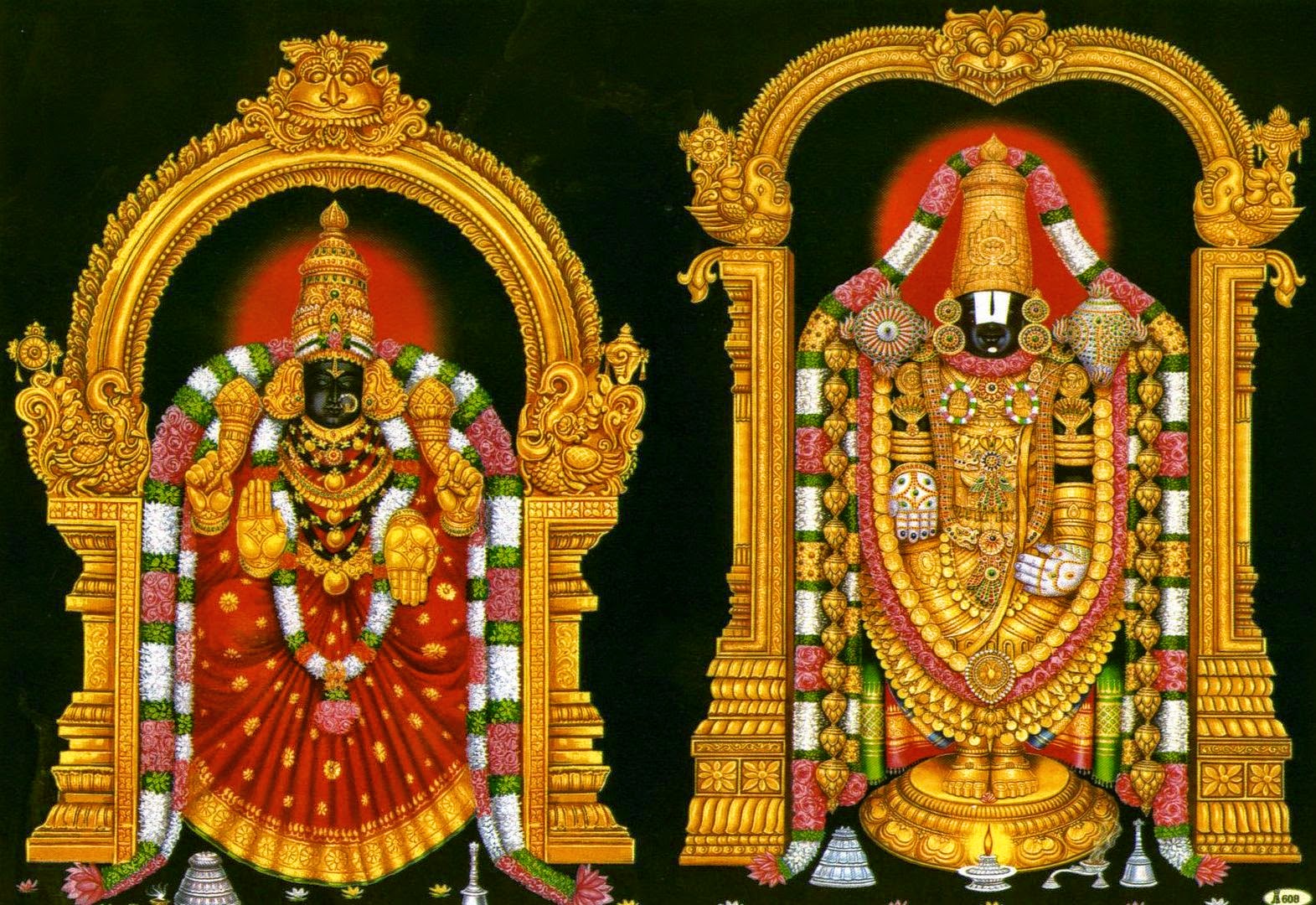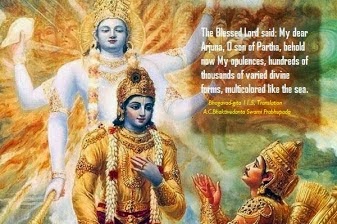Saturday, Jan04, 2014. Srimad Bhagavadgeeta : Chapter-5.( Karma-sanyasa-yogam ) Slokam-18.
Saturday, Jan04, 2014.
Srimad Bhagavadgeeta :
Chapter-5.( Karma-sanyasa-yogam )
Slokam-18.
Vidyavinayasampanne brapmanane gavi hastini,
Suni caiva svapake ca pandithah samadarsinah.
Pandithah = The learned ones;
Vidya vinaya sampanne = Vidya means knowledge of the Self; and vinaya means pridelessness; endowed with learning and humility;
Brapmana = on a Brahmana; who has Self-knowledge and modesty;
Gavi hastini = on a cow; on an elephant;
Suni ca svapake Ca eva = on a dog; ( as well as;) and even on an eater of dog's meat;
Sama-darsinah = ( Atma- Jnani ) looks the above as one in Atma.
The learned ones look with equanimity on a Brahmana endowed with learning and humality, a cow, an elephant and even a dog as well as an eater of dog's meat.
In a gentle brahmin fully educated, in a cow, in an elephant and surely also in an outcast, see those who are wise [the soul] with equal vision.
Whether it concerns a brahmin of virtue and achievement, a cow, an elephant, a dog or a drop-out, the one of wisdom regards them all equal-minded.
The humble sage, by virtue of true knowledge, sees with equal vision a learned and gentle brahmin, a cow, an elephant, a dog and a dog-eater [outcaste] .
Those learned ones who are habituated to see (equally) the unchanging, same and one Brahman, absolutely untouched by the qualities of sattva etc. and the tendencies created by it, as also by the tendencies born of rajas and tamas, in a Brahmana, who is endowed with Knowledge and tranquillity, who is possessed of good tendencies and the quality of sattva; in a cow, which is possessed of the middling quality of rajas and is not spiritually refined; and in an elephant etc., which are wholly and absolutely imbued with the quality of tamas-they are seers of equality.
Now the question may arise being what kind of persons are those who achieve moksa or liberation? Lord Krishna uses the word panditah or the wise. Who are the wise? Those with the inner eye of wisdom who perceive the Brahman or spiritual substratum pervading all existence in things that appear dissimilar. The example of a humble, learned brahmin and an outcaste dogeater shows dissimilarity in conduct and the examples of a cow and an elephant show dissimilarity in species but the spiritually awakened sees all with equal vision.
The name Brahmana refers to the saintly and spiritual class in India possessed of moral conduct and Vedic knowledge. The mention along with them of a cow, an elephant, a dog and an outcaste person who eats dog is to illustrate the great differences in the physical bodies of all the various species of life in which the embodied atma or soul resides in. The variegated appearances of different species of life is due to prakriti or material nature not the atma. The compound word sama-darsinah meaning equal vision is how those in atma tattva or soul realisation regard all the atmas residing in unlimited bodies as being equal due to the atmas essential nature of being eternal and of being an infinitesimal part of the Supreme Lord Krishna.
Due to this supra-conscious awareness illuminating one's intelligence atma tattva or realisation of the soul is attained and once this happens then one realises the soul, as a manifestation of the Supreme Lord existing equally in all living beings. This is purport Lord Krishna is giving in this verse.
Now begins the summation.
Even though there are external differences in the forms among embodied beings including humans, aquatics, animals and plants, the Supreme Lord Krishna is ever present in each and every being as a witness energising them all as the Supreme Soul and from whom a minuscule portion comprises the eternal individual soul.
Lord Krishna uses the word panditah meaning wise or learned, for those who perceive the reality as it is and beholds the nature of the atma or soul equally in all beings. From a Brahmin endowed with spiritual knowledge and a cow the best of all animals both being in the mode of goodness as well as a dog and an outcaste person of the lowest order, all are seen with an equal vision. The purport is that the apparent unevenness between the highest and the lowest is the characteristics of their bodily designation which is the product of material nature but never reflective of the eternal, pure state of the atma. Such a wise being always perceives the intrinsic nature of the soul as it is, unaffected by the degradation of any bodily conception.
A Krishna conscious person does not make any distinction between species or castes. The brahmana and the outcaste may be different from the social point of view, or a dog, a cow, or an elephant may be different from the point of view of species, but these differences of body are meaningless from the viewpoint of a learned transcendentalist. This is due to their relationship to the Supreme, for the Supreme Lord, by His plenary portion as Paramatma, is present in everyone's heart. Such an understanding of the Supreme is real knowledge. As far as the bodies are concerned in different castes or different species of life, the Lord is equally kind to everyone because He treats every living being as a friend yet maintains Himself as Paramatma regardless of the circumstances of the living entities. The Lord as Paramatma is present both in the outcaste and in the brahmana, although the body of a brahmana and that of an outcaste are not the same. The bodies are material productions of different modes of material nature, but the soul and the Supersoul within the body are of the same spiritual quality. The similarity in the quality of the soul and the Supersoul, however, does not make them equal in quantity, for the individual soul is present only in that particular body, whereas the Paramatma is present in each and every body. A Krishna conscious person has full knowledge of this, and therefore he is truly learned and has equal vision. The similar characteristics of the soul and Supersoul are that they are both conscious, eternal and blissful. But the difference is that the individual soul is conscious within the limited jurisdiction of the body, whereas the Supersoul is conscious of all bodies. The Supersoul is present in all bodies without distinction.
.jpg)



Comments